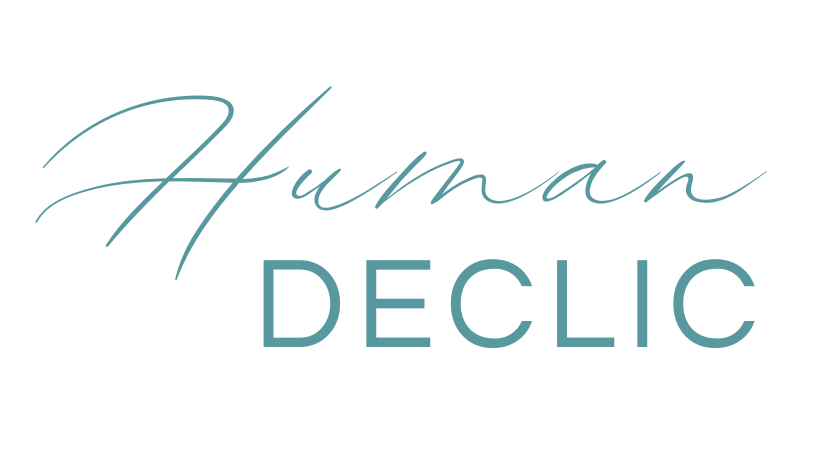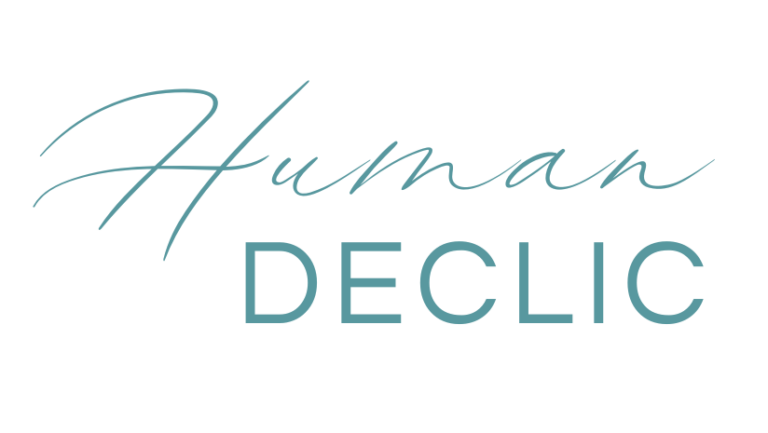In a professional world where agility and collaboration are more central to success than ever before, a team’s strength lies not only in the sum of its individual skills but in its ability to work together towards a common goal. As an HR and coaching expert with over two decades of experience, I have had the privilege of guiding countless teams towards increased synergy and performance. In-house training can be a powerful driver of internal transformation.
It’s no secret: tightly knit, aligned, and engaged teams are the ones that move mountains. But how do you forge this unity, especially in ever-changing environments? The often underestimated answer lies in training programs specifically designed for and by the company itself. These tailored programs not only develop skills but also weave unbreakable bonds between colleagues, catalyzing cohesion and resilience.
In this article, we delve into the myriad benefits that in-house training offers for team cohesion. From extensive personalization to measurable impacts on corporate culture, through testimonies of successful transformations, discover how this strategic lever can become your most valuable ally in the pursuit of collective excellence.
Ready to transform your team? Then, join me in this enlightening exploration that could redefine how you envision professional development within your organization.

The Fundamentals of In-House Training
In-house training, often perceived as the beating heart of a learning organization, is much more than a simple transfer of knowledge. It is a tailor-made journey, specifically designed to meet the unique needs and aspirations of a company and its teams. Before delving into the depths of this universe, let’s define what this truly means and how it distinguishes itself from other forms of professional development.
What is In-House Training?
Imagine a tailor taking precise measurements of their client, selecting the most suitable fabric, and crafting a perfectly tailored suit. In-house training follows a similar process: it is entirely customized to fit like a glove with the objectives, culture, and specific challenges of an organization. Unlike generic training, it is developed in close collaboration with the company to ensure that each module, case study, and activity meets expectations and reinforces the key skills required by the teams.
Distinctive Features
- Personalization: The program is tailor-made to align with the company’s strategic objectives.
- Flexibility: Sessions can be adapted to seamlessly integrate with the team’s work rhythm, minimizing disruptions.
- Targeting: Content addresses specific internal issues, offering immediately applicable solutions.
- Cohesion: Fosters stronger bonds among participants, cultivating a sense of belonging and a shared vision.
Comparison with Other Types of Training
To better understand the unique value of in-house training, let’s compare it to other popular methods.
- Inter-Company vs. In-House: While inter-company trainings bring together participants from different companies, fostering networking and idea exchange, they often lack the necessary personalization to address a specific organization’s challenges. In-house training, on the other hand, delves into the unique issues of the company, offering tailor-made solutions.
- E-Learning vs. In-House Face-to-Face Training: While e-learning offers great flexibility and accessibility, it can sometimes isolate learners and lack the human interaction necessary for certain skills. In-house training, often delivered in person (though it can also be adapted to virtual formats), enhances group dynamics and engagement through live interactions.
In essence, in-house training stands out for its ability to seamlessly merge with the very fabric of the organization, making it not only relevant but deeply transformative. It is not an off-the-shelf solution but rather a co-created adventure, a meticulously choreographed dance to reveal and strengthen the team’s collective potential.
Personalization and Meeting Specific Needs
The key to the success of in-house training lies in its ability to be shaped and adjusted according to the unique contours of an organization. This deep personalization is not a luxury but a necessity, allowing for an effective response to the team’s specific needs. Let’s delve into the world of personalization to understand its impact and discover how it can turn challenges into growth opportunities.
The Art of Personalization
Imagine an artisan creating a custom piece of art: every brushstroke is deliberate to match the client’s vision. Similarly, personalizing training involves a deep understanding of the company’s needs, goals, and culture. It is a collaborative process where trainer and company together weave the ideal program, ensuring that each element is aligned with the team’s aspirations and specific challenges.
Meeting Unique Needs
The strength of personalization lies in its ability to target specific issues. For example:
- Change Management: Faced with a merger or acquisition, a customized training can prepare teams to navigate the murky waters of change, strengthening organizational resilience and minimizing resistance.
- Improving Internal Communication: For a company struggling with departmental silos, a training designed to break down these barriers can encourage cross-departmental collaboration, essential for innovation and efficiency.
- Leadership: For rapidly growing companies, developing leadership skills within managerial teams can be crucial. A personalized training can focus on specific skills such as decision-making, team management, or communication, propelling the company to new heights.
Concrete Examples
Let’s take the example of a technology company facing rapid growth. Challenges include the effective integration of new employees, managing distributed teams, and maintaining a consistent corporate culture. A personalized in-house training can offer a unique onboarding journey that not only familiarizes new employees with the company’s tools and processes but also reinforces the company’s values and vision, ensuring smooth growth.
Another example could be a manufacturing company looking to improve its safety and efficiency practices. A tailored training, focused on the specific needs of the work environment and the unique challenges employees face, can lead to significant improvements in terms of safety, employee satisfaction, and productivity.
These examples illustrate how, through the lens of personalization, in-house training becomes a powerful tool, capable of transforming a company’s specific challenges into opportunities for growth and improvement. By focusing on the team’s unique needs, it paves the way for truly impactful solutions, forging a path toward organizational excellence.
Strengthening Bonds and Improving Communication
At the core of any thriving business is a united team, characterized by strong bonds and seamless communication. In-house training plays a crucial role in weaving these bonds, acting as a catalyst for closer collaboration and better mutual understanding. Let’s take a closer look at how it facilitates this relationship building and enhances communication within teams.
Forging Stronger Bonds
In-house training brings colleagues together in a different context from their usual work environment, fostering more personal and less formal interactions. These interactions allow team members to see each other in a new light, discover hidden facets of their colleagues, and strengthen interpersonal bonds. Imagine a conflict resolution workshop where, through role-playing, employees not only learn to resolve disputes constructively but also come to appreciate each other’s unique perspectives and skills. This type of shared experience forms deep bonds, essential for a cohesive team.
A Catalyst for Communication
By focusing on skills such as active listening, non-verbal communication, and constructive feedback, in-house training opens up new channels of communication within teams. It teaches members how to clearly express their ideas, listen empathetically, and use feedback to stimulate personal and collective growth. These skills are vital in a professional environment, where effective communication can make the difference between the success and failure of a project.
Improved Collaboration
By enhancing communication, in-house training also facilitates collaboration. Team members learn to work together more effectively, leveraging each other’s strengths and compensating for weaknesses. Workshops on project management or collective decision-making can help teams develop strategies to approach tasks cohesively, ensuring that all members contribute meaningfully and feel valued.
Impact on Team Performance
The combined effect of strengthening bonds and improving communication results in a significant increase in team performance. Teams that communicate well and maintain strong relationships are more agile, more resilient in the face of challenges, and more innovative. They can navigate changes with confidence and work together towards common goals more efficiently.
In-house training is not just an investment in individual skills but also in the relational fabric of the organization. By strengthening bonds and improving communication, it creates an environment where collaboration flourishes, ideas flow freely, and teams are equipped to achieve excellence.
Development of Collective Skills
The success of a company relies not only on individual talents but also on the collective ability of its teams to collaborate, innovate, and overcome challenges together. In-house training stands out with its unique approach aimed at developing skills not only on an individual level but especially on a collective level. Let’s delve into the world of developing collective skills and discover how it can transform the working dynamics within organizations.
Cultivating Collective Intelligence
Collective intelligence can be compared to a rich mosaic, where each piece represents the individual skills and knowledge of team members. When these pieces are harmoniously assembled, they reveal a much more powerful complete picture than the sum of its parts. In-house training is the glue that binds these pieces together, encouraging teams to share their knowledge, learn from each other, and co-create solutions. It is within this collaborative space that collective intelligence flourishes, propelling innovation and creative problem-solving.
Examples of Collective Skills
- Problem Solving: Trainings can help teams develop a systematic approach to identify, analyze, and solve problems together. This includes the ability to consider diverse perspectives, generate creative solutions, and make consensus-based decisions.
- Critical Thinking: By working together, teams learn to question assumptions, critically evaluate information, and discern facts from opinions. These skills are essential for navigating a complex environment.
- Adaptability and Flexibility: Faced with rapid market changes, teams need to be able to adapt and react agilely. In-house training can strengthen these collective skills, teaching teams how to pivot effectively in response to new realities.
- Communication and Collaboration: Beyond individual communication skills, trainings can enhance teams’ ability to collaborate effectively, fostering mutual understanding, establishing clear communication processes, and cultivating an inclusive and respectful work environment.
Impact on Organizational Performance
The development of collective skills has a profound impact on organizational performance. Teams with a strong foundation of collective skills are better equipped to face challenges, achieve their goals, and contribute significantly to the organization’s success. They are the drivers of innovation, operational efficiency, and customer satisfaction.
In conclusion, in-house training plays an essential role in developing collective skills, creating a space where teams can learn, grow, and evolve together. By investing in the development of these skills, companies can truly transform their collective potential into tangible results, marking the beginning of a new era of collaboration and shared success.
Adaptability and Resilience
In a constantly changing economic and technological landscape, adaptability and resilience are not just assets but vital necessities for teams and organizations. In-house training plays a crucial role in equipping teams to navigate with agility in a changing world, turning challenges into opportunities for growth and development. Let’s explore how this preparation manifests and the intrinsic link it has with team performance.
Preparing Teams for the Unexpected
In-house training, with its focus on adaptability and resilience, prepares teams for the unexpected. It teaches them to anticipate changes, react quickly to unforeseen situations, and bounce back from setbacks. This preparation involves various scenario simulations, real-time problem-solving workshops, and strategic brainstorming sessions where teams learn to identify change signals and develop flexible action plans.
Enhancing Adaptability
Adaptability is the ability to quickly adjust strategies, processes, and behaviors in response to new information, changes in the environment, or unexpected outcomes. Within the framework of in-house training, teams develop this essential skill by exploring new working methods, adopting innovative technologies, and cultivating a growth mindset. Sessions designed to step out of the comfort zone encourage team members to embrace change rather than fear it, fostering an organizational culture where adaptability is seen as a driver of continuous success.
Cultivating Resilience
Resilience, on the other hand, is the team’s ability to persevere in the face of adversity, overcome obstacles, and recover from failures. In-house training contributes to building this resilience by strengthening team cohesion, improving emotional management skills, and focusing on well-being. By learning to collectively manage stress, support members facing difficulties, and learn from failures, teams build a foundation of resilience that makes them stronger and more united, even in challenging times.
Link with Team Performance
The link between adaptability, resilience, and team performance is undeniable. Teams that possess these qualities are better prepared to navigate uncertainty, seize changes as opportunities to excel, and maintain a trajectory of success despite challenges. They are characterized by increased innovation, better risk management, and improved operational efficiency. Ultimately, adaptability and resilience translate not only into survival in a competitive environment but into prosperity and leadership.
In conclusion, in-house training is essential for developing adaptability and resilience within teams, thus preparing them with confidence to face future challenges. By investing in these skills, companies lay the foundations for outstanding team performance, capable of turning obstacles into stepping stones to success.
Strengthening Company Culture
Company culture, the set of values, norms, and practices that shape the work environment, plays a crucial role in employee motivation, engagement, and satisfaction. In-house training emerges as a powerful tool to not only promote but also strengthen a positive and inclusive company culture, creating a workplace where each member feels valued, understood, and engaged. Let’s explore the impact of these initiatives on organizational dynamics together.
Promoting a Positive and Inclusive Culture
In-house training can be designed to reflect and promote the organization’s core values, integrating specific modules on diversity, equity, inclusion, and well-being at work. By focusing on these themes, trainings help raise employees’ awareness of different perspectives and reinforce a culture of mutual respect and understanding. This creates an environment where everyone feels welcome and appreciated, fostering increased collaboration and innovation.
Impact on Employee Engagement
When employees feel aligned with the values and mission of their company, their level of engagement significantly increases. In-house training, by aligning its content with company culture, plays an essential role in this alignment. By participating in trainings that reflect the company’s values and acquiring skills that support these values, employees develop a sense of belonging and identification with the organization. This enhanced engagement translates into increased motivation, higher productivity, and ultimately, better overall company performance.
Effects on Talent Retention
Talent retention is a major challenge for many organizations in today’s competitive climate. A strong company culture, supported by targeted in-house training initiatives, can become a key factor in retention. Employees who feel invested, who see opportunities for personal and professional growth, and who perceive their work environment as supportive and rewarding are less likely to seek opportunities elsewhere. Additionally, a positive company culture also attracts new talent, facilitating recruitment and contributing to the construction of a strong and engaged team.
The role of in-house training in strengthening company culture is undeniable. By actively cultivating a positive and inclusive culture, aligning employees with the organization’s values and goals, and fostering a work environment where everyone feels valued, companies can not only improve employee engagement and satisfaction but also increase the retention of their talents. Investing in in-house training is therefore investing in company culture itself, laying the foundations for a prosperous future for the organization and its members.
Conclusion
Through our exploration of the multiple benefits of in-house training, we have discovered how essential this tool is for building a strong team cohesion, cultivating a dynamic company culture, and propelling organizational performance. As a professional dedicated to coaching and human resources development, I have witnessed remarkable transformations within organizations that have adopted this personalized and deeply engaged approach. The benefits are undeniable: improved communication, strengthened collaboration, increased employee engagement, and better





